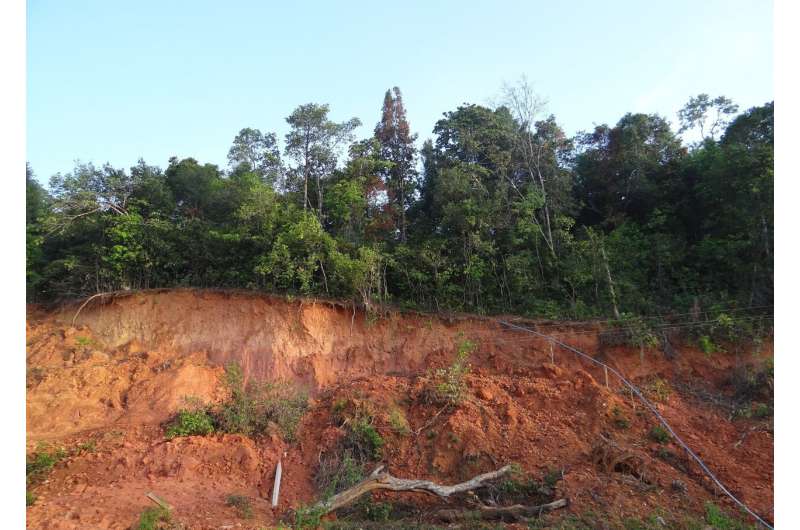This article has been reviewed according to Science X's editorial process and policies. Editors have highlighted the following attributes while ensuring the content's credibility:
fact-checked
trusted source
proofread
Common mineral in red soils tends to lock away trace metals over time, study finds

Trace metals are nutrient elements, like zinc, that animals and plants need in small amounts to function properly. Animals generally get trace metals in their diets or through environmental exposures, while plants take their trace minerals up from soil. If we get too little, we may experience a deficiency, but the opposite can also be true: Too much of a trace metal can be toxic.
Scientists believe that up to 50% of the trace metals in soils and urban environments may be bound to the surfaces of mineral grains—rendering the trace metals essentially unavailable for consumption or exposure. Researchers at Washington University in St. Louis wondered what holds them in place.
"When minerals bind trace metals, we often assume that they act like a sponge," said Jeffrey G. Catalano, a professor of Earth, environmental and planetary sciences and the director of environmental studies in Arts & Sciences. "But sometimes, they bind trace metals and won't let them go. That is great when they are contaminants, but bad when they are serving as micronutrients."
In a study published in the journal Environmental Science & Technology, Catalano and Greg Ledingham, a Ph.D. candidate in his laboratory, discovered that a common mineral called goethite—an iron-rich mineral that is abundant in soils that cover the Earth—tends to incorporate trace metals into its structure over time, binding the metals in such a way that it locks them out of circulation.
The portion of the trace metals that get bound to goethite scaled with ion size, the researchers found. Up to 70% of nickel, the trace metal with the smallest ionic radii in this study, was non-recoverable, while only 8% of cadmium was irreversibly bound to goethite.
"In the past, to study how trace metals attach and are retained at mineral surfaces, geochemists had to substantially alter the chemical conditions in ways that were not realistic or true to real-world systems," said Ledingham, who is a graduate fellow of the McDonnell Center for the Space Sciences. "Changing the pH, for instance, affects how particles group together and can influence how metals bind to the surface.
"We used a new approach called isotope exchange that allowed us to track how metals bind, detach and incorporate into iron oxyhydroxides in real time and in conditions representative of real soils and river systems," he said.
"Our study suggests that iron oxyhydroxide minerals, like goethite, may be a much better sink for trace metals than previously thought," Catalano said.
Knowing that goethite tends to naturally trap trace metals over time could help scientists to better predict how certain contaminants move through the environment, study authors said. It also could mean that trace metal nutrients added to farm and garden soils may become less effective after a few months.
The findings suggest the environmental impact is mixed: trapping metals acting as contaminants will clean up soils and water supplies, but metals serving as essential nutrients are also unavailable for plants and other organisms, the researchers said.
More information: Greg J. Ledingham et al, Irreversible Trace Metal Binding to Goethite Controlled by the Ion Size, Environmental Science & Technology (2024). DOI: 10.1021/acs.est.3c06516
Provided by Washington University in St. Louis




















